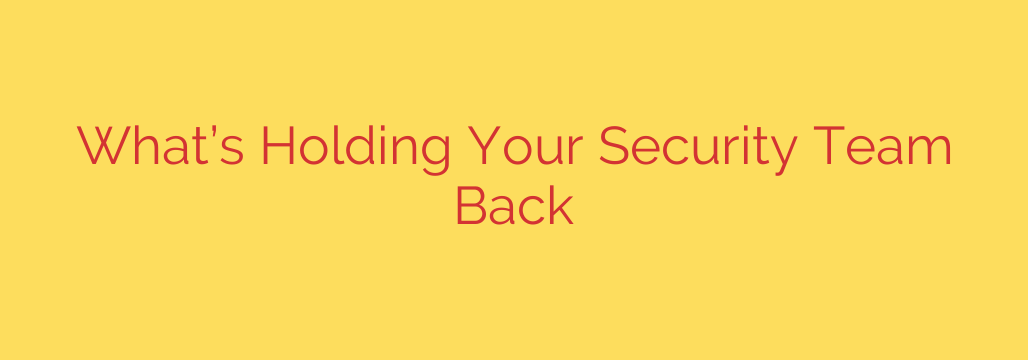
In today’s complex digital landscape, cybersecurity teams face unprecedented challenges. While threats evolve rapidly, many internal factors can hinder a security team’s effectiveness, preventing them from operating at their full potential and adequately protecting the organization. Understanding these roadblocks is the first step toward building a more resilient and efficient security posture.
One primary obstacle is often a lack of adequate resources. This isn’t just about budget, although that’s frequently a constraint. It also encompasses insufficient staffing levels and a dearth of specialized talent. The demand for skilled cybersecurity professionals far outweighs the supply, leading to teams being stretched thin and struggling to cover all necessary areas, from threat intelligence and analysis to incident response and compliance.
Another significant hurdle is the sheer complexity of the security environment. Modern infrastructures are distributed across cloud, on-premises, and hybrid environments. The volume and variety of security tools can be overwhelming, often creating siloed data and requiring constant maintenance and integration efforts. This complexity can lead to blind spots and make it difficult for teams to gain a unified view of their risk posture. Effectively managing this intricate web requires not only technical skill but also clear processes and strategic planning.
Furthermore, security teams frequently grapple with difficulty in prioritizing threats and vulnerabilities. The constant stream of alerts and potential issues can lead to alert fatigue, making it challenging to identify the truly critical risks that require immediate attention versus lower-priority issues. Without effective threat intelligence and a risk-based approach, teams can expend valuable energy on less impactful problems while significant dangers lurk unnoticed. Establishing a clear framework for risk assessment and prioritization is crucial.
Poor communication and lack of alignment with the broader business can also undermine security efforts. Security can sometimes be perceived as a barrier to business initiatives rather than an enabler. Gaining executive buy-in and fostering a security-aware culture across the organization is vital. When security is integrated into business planning and understood at all levels, the team is better positioned to implement necessary controls and initiatives effectively.
Finally, the human element cannot be ignored. High stress levels, long hours, and the constant pressure of defending against relentless attacks can lead to burnout among security professionals. Retaining talent and maintaining team morale requires recognizing these pressures and implementing strategies for workload management, professional development, and fostering a supportive team environment.
Addressing these fundamental issues – securing sufficient resources, simplifying the security stack, improving threat prioritization, strengthening business alignment, and supporting the team’s well-being – are critical steps for any organization looking to empower its security team and build a robust defense against the ever-growing threat landscape.
Source: https://www.helpnetsecurity.com/2025/07/09/why-cybersecurity-friction/








